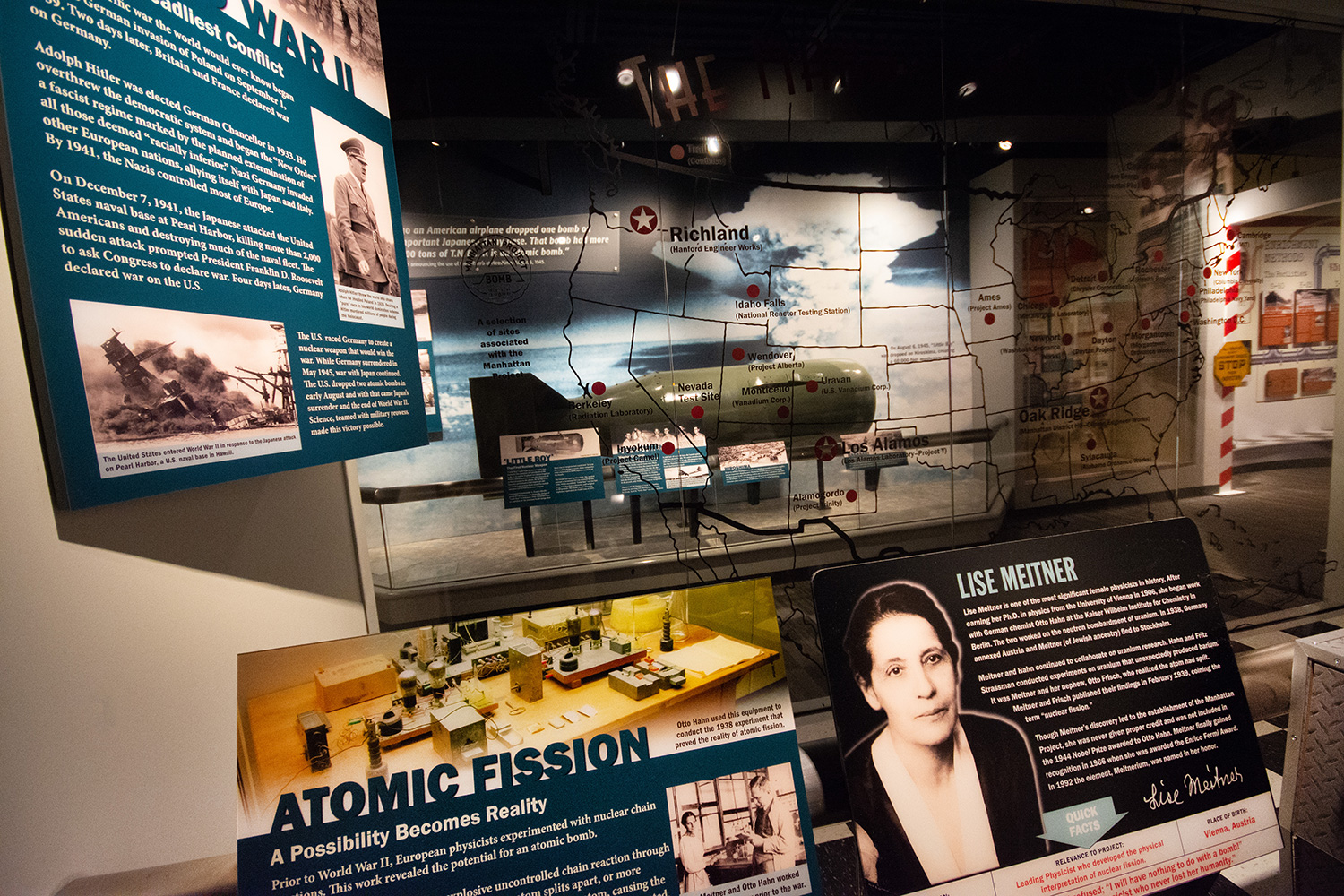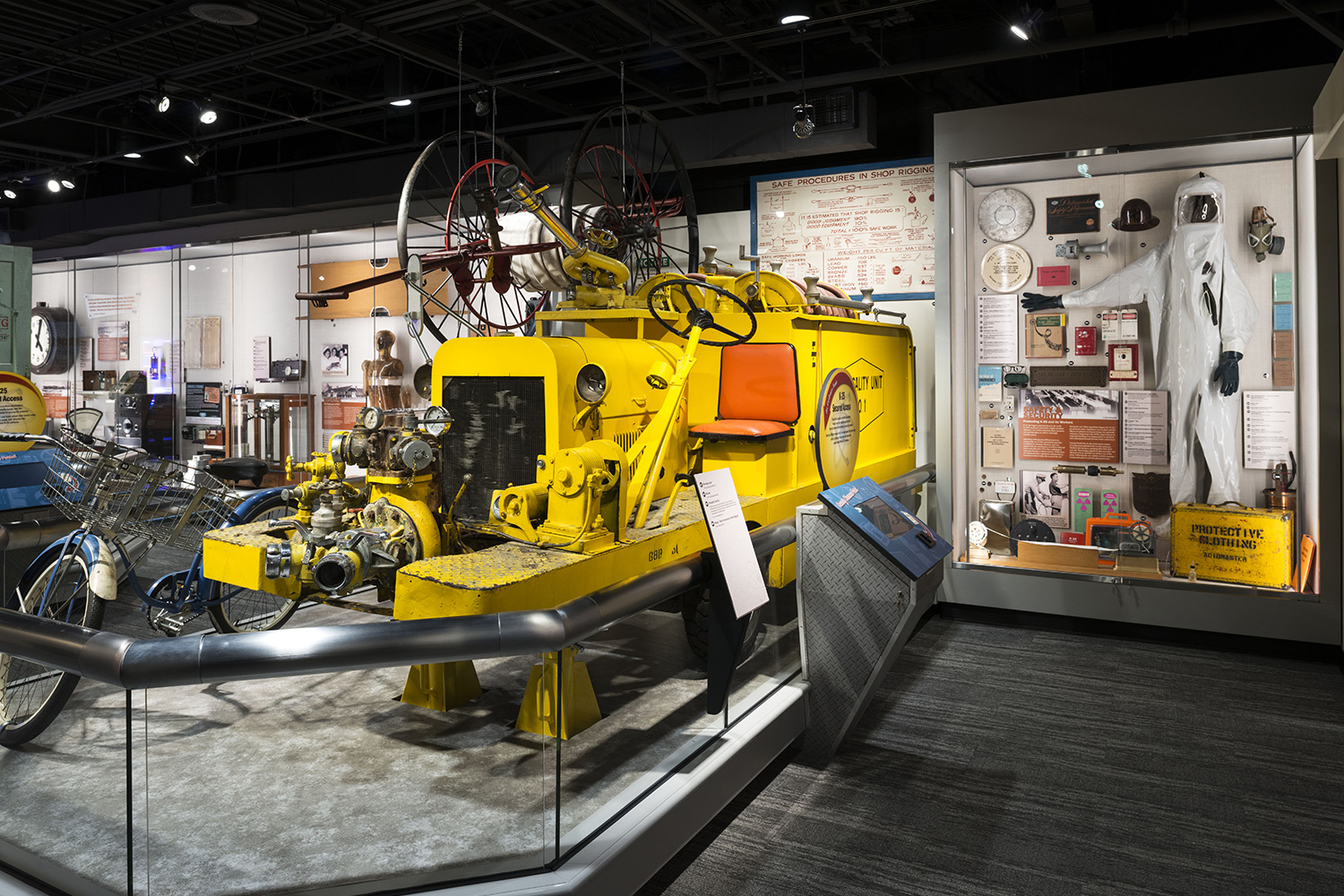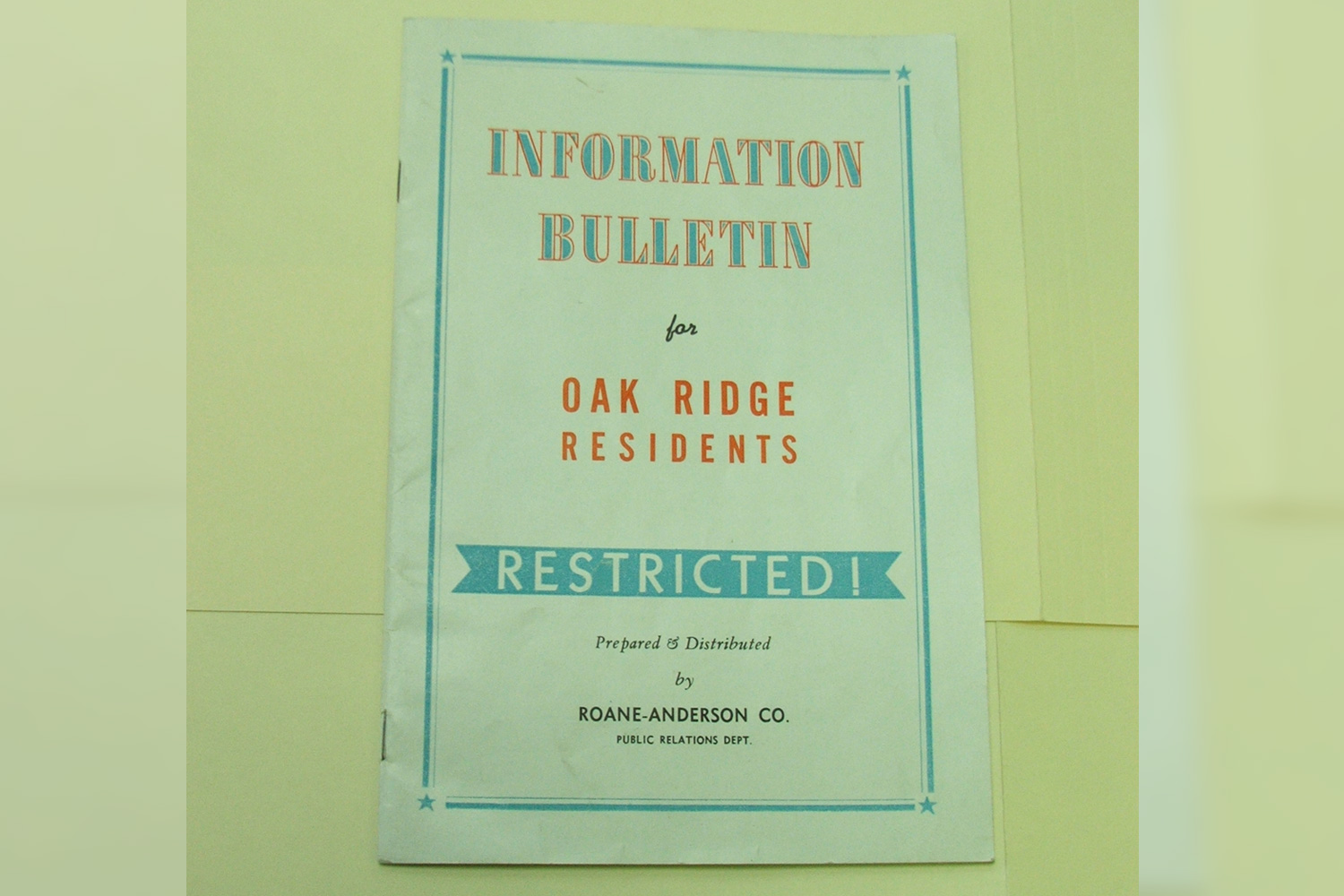K-25 PRESERVATION
National Historic Preservation (NHP) efforts at the K-25 Site honor the men and women who designed, built, and operated the world's first gaseous diffusion plant and the hundreds of facilities and structures that followed. Since its inception in 1945, the site and its people have delivered defense, energy, and environmental cleanup missions that have helped end war, fuel nations, and restore the local landscape.
The K-25 History Center was built next to the original foundation of the K-25 Building and opened to the public in February 2020. This facility offers visitors 7,500 square feet of exhibits with 300 original artifacts on display.

Burn Barrel for secure collection and eventual disposal (burning or shredding) of classified documents

Cover Badges were handed to workers upon entry through a K-25 portal and worn from their photo ID badge to ensure authorized entry into K-25

Potentiometer from Building K-1401 formerly used at Columbia University SAM Laboratory where barrier material was being developed

Poster of classified "special chemicals" developed for use with uranium hexafluoride at K-25 with code names to disguise actual chemical names
Construction began in August 2023 on the K-25 Viewing Platform adjacent to the K-25 History Center. The Viewing Platform will provide visitors with a complete view of the historic K-25 Building’s 44-acre footprint. While the K-25 History Center focuses on the men and women who built and operated K-25 during the Manhattan Project and Cold War, the Viewing Platform and associated exhibits will help visitors understand the scope and magnitude of the K-25 Building and Site.
The Department of Energy will commemorate the site's contributions through the delineation and dedication of the K-25 Building "footprint." National Park Service-style wayside exhibits will provide additional information about the site, its people, and its missions. In the spot where the story began, visitors will explore the rich history of this Manhattan Project site, cloaked in secrecy and driven by urgency.
In December 2014, the footprint of the former K-25 Building and other historic facilities in Oak Ridge became part of a larger preservation effort through the National Defense Authorization Act, authorizing establishment of a Manhattan Project National Historical Park. Current NHP activities complement plans for the multi-site park.























